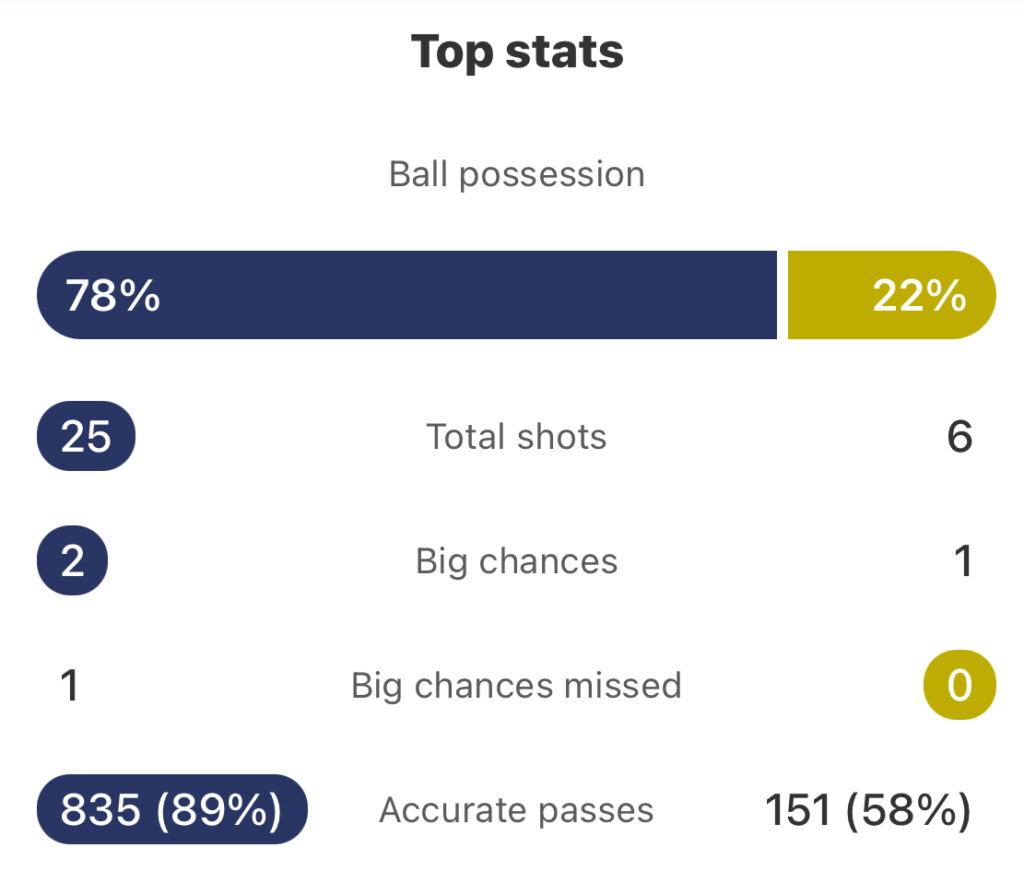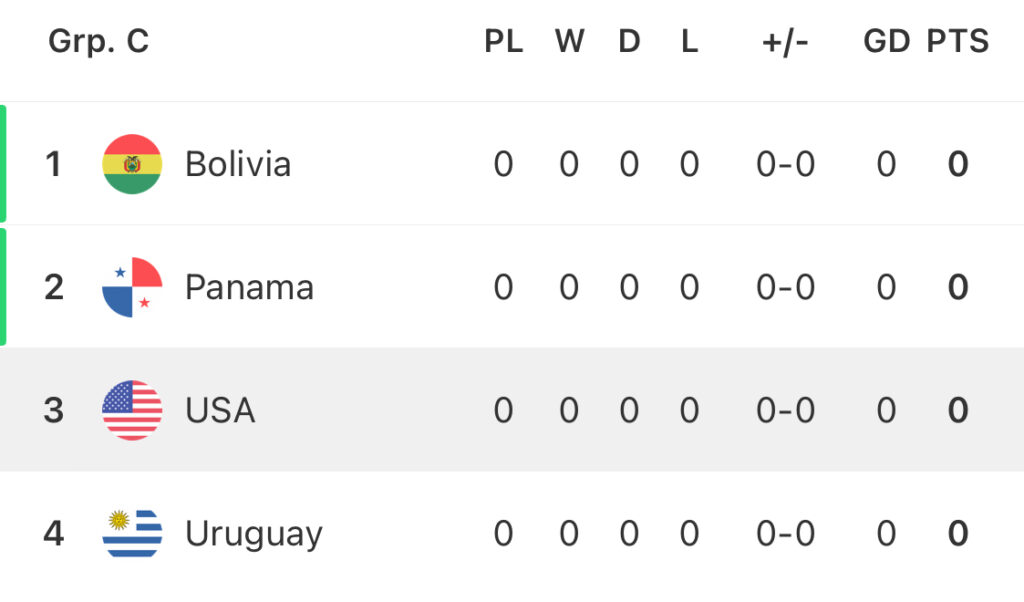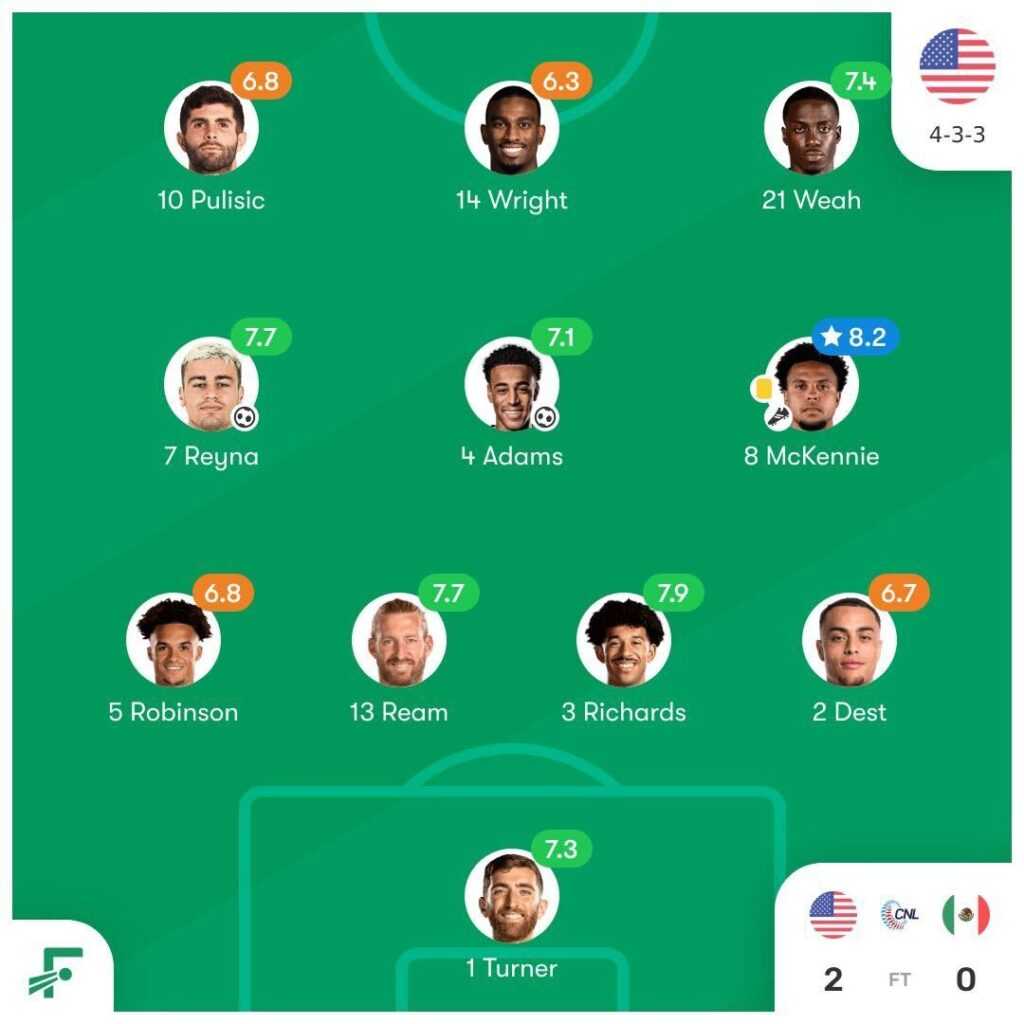Analysis: USMNT have found the formula for Copa América in their Nations League triumph
In a very fruitful men’s international break, the United States Men’s National Team (USMNT) added more silverware to their collection by defending their CONCACAF Nations League title. More importantly, though, they might just have discovered the tactical formula for the upcoming Copa América in the process.
By Neel Shelat
With a 3-1 win over Jamaica in the semi-final followed by a 2-0 success against old rivals Mexico at the Allegiant Stadium, the USA tasted success at the end of the CONCACAF Nations League knockouts.
That was also the perfect preparation in their last competitive fixtures ahead of the 2024 Copa América, which will be held in the States for the second time in its last four editions. They finished fourth last time around and will once again not be among the clear favourites such as Argentina and Brazil, but they will be right in the mix of the chasing pack. The likes of Uruguay, Mexico and Colombia will give them a tough fight in the battle to reach the semi-finals, so going into the tournament in good shape will be important.
The USMNT look set to do just that. Not only do they have form and momentum on their side, but more importantly, in the last week, they seem to have finalised a system and quite possibly a starting XI for the tournament.
Gregg Berhalter’s men survived a big scare in the semi-final against Jamaica, as they conceded seconds after kick-off and trailed for over 95 minutes before they could get a last-gasp equaliser to take the game to extra time, where they scored twice more. It would be harsh to call their win undeserved, as they knocked at the door of Jamaica’s low block very hard and eventually forced it open.

Tactically, the USMNT’s midfield was perhaps a touch imbalanced in this game as Yunus Musah was used as the lone number six with Weston McKennie and Malik Tilman on either side of him in their 4-3-3 formation. This trio seemed to lack enough attacking and creative impetus, both due to the lack of a pure playmaker in there as well as the fact that Musah is not a pure defensive midfielder and is better off in a freer role. Indeed, the game really changed once Giovanni Reyna came on as he brought a creative spark and provided assists for both of the extra time goals.
Breaking down low blocks is a concern for the USMNT, but that is not what will be most important for Copa América success. Even allowing for some questionable tactical decisions, they should reasonably be expected to have enough quality to power past the likes of Bolivia and Panama on home soil and battle for the top spot in the group with Uruguay.

Once they are in the knockouts, they will likely face opponents of equal or greater quality against whom their defensive solidity and ability to threaten in transition will be the most important facets of their game. With that in mind, their performance in the Nations League final against Mexico was incredibly encouraging.
For one, Berhalter seemed to get his starting XI spot on. Tyler Adams made his first international start since the World Cup as he approaches the end of a very long road to recovery from hamstring issues, and his presence as the holding midfielder enabled his partners to have more attacking freedom. McKennie played a more box-to-box role to his right, while Reyna was given a free attacking role just off the left. Up front, Haji Wright was rewarded for his match-winning brace in the semi-final with a start in between the two set wingers Timothy Weah and Christian Pulisic.

Tactically too, they seemed to get everything right. Out of possession, the USMNT’s player-oriented high block and selective press regularly disrupted Mexico’s build-up and forced them to kick it long. With the ball, they showed good balance and fluidity in their structures.
Just like any typical 4-3-3 team, their initial possession structure resembled a 2-3-2-3, but in the opposition half, things changed a fair bit as Reyna regularly dropped deep and even formed a triangular back three with the centre-backs. By doing so, he was not only able to get himself time on the ball facing forward to spray incisive passes and help the team progress, but he also enabled the full-backs to advance down the wings and use their attacking qualities.
This pattern in particular shows Berhalter’s understanding of adapting tactics to suit player profiles, which is especially important in international football. Both Sergiño Dest and Antonee Robinson are attacking full-backs who like to get down the wings and can pose a threat in the final third, while Pulisic is capable of threatening with and without the ball in the left channel and Weah can do a job as a second striker of sorts. Reyna’s case is an interesting one as he has struggled to get game time at the club level due to his relative lack of defensive work rate and quality with time and space on the ball, but these factors are not as much of a concern at the international stage so he could yet be one of the USMNT’s most important players.
This setup and system seems to be the blueprint that the USA must use for their home Copa América, but one big question remains: who should start as the striker? Wright certainly made a great case for himself in the semi-final and is enjoying a great season with Coventry City in the Championship, but Folarin Balogun is also giving a decent account of himself at a higher level with Monaco. Ricardo Pepi and Joshua Sargent offer a couple of other alternatives, though one of them will likely not make the squad for the Copa.
The rest of the XI seems set, though, save for Reyna potentially being replaced by a more combative box-to-box midfielder like Musah against stronger opponents. The USA showed enough defensive solidity against the world’s best teams in Qatar and clearly have the attacking quality in the team to put themselves in contention for the Copa América. Of course, Brazil and Argentina will be the clear favourites, but should they drop the ball, the USMNT appear poised to pounce on the opportunity.
(Cover image from IMAGO)
You can follow every USMNT game live with FotMob — featuring deep stats coverage including player ratings. Download the free app here.